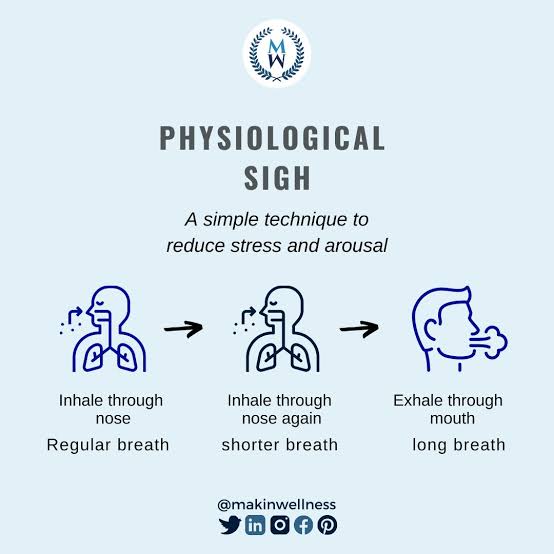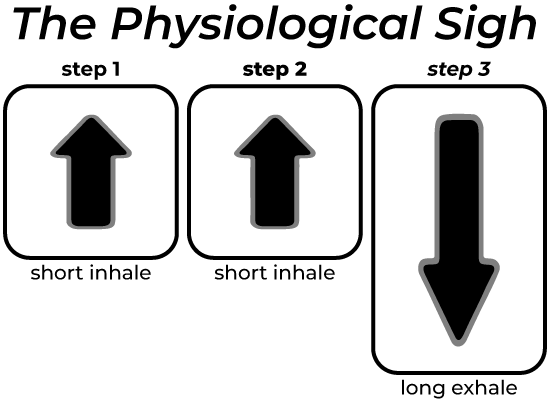Sympathetic system – that runs through below our neck and to our core containing neurons that manage stress. Stress response is generic and therefore affects the entire system indiscriminately. Stress response activates certain things and shutdowns other features. Stress response is activated to support you moving. Fundamentally its goal is to make you do something. To control stress, you need to learn to work with the agitation (Exposure Therapy) parasympathetic system – system that is responsible for activating your calm state (This is what you should be activating when stressed)
Physiological Sigh is the fastest hard wired way for us to eliminate this stressful response in our body quickly in real time. It is an example of a bottom up stress management technique that can be used acutely to reduce stress and anxiety.
In a recent study from Stanford University, five minutes of controlled breathing is found to reduce anxiety and stress. The research from David Spiegel, neurobiologist Andrew Huberman, and Melis Yilmaz Balban demonstrates that thus style of controlled breathing for five minutes cab lower your anxiety, improve mood and even result in decreased rates of breathing at rest, which is a sign of overall body calmness.

Realtime Practice: PHYSIOLOGICAL SIGH – two inhales take place followed by a long exhale. (Reduces stress significantly) Long & vigorous exhales arouses calmness and slows the heart. If stress is so high and you activate the parasympathetic system too much it may cause you to faint. It takes 30 seconds for your heart to calm down after activation and you may need to use sighs more than once.
When lung expands, the heart volume expands and so blood flows slowly. In response, the brain makes it beat faster. So, whenever your inhales are shorter in duration or more vigorous than exhales, heartbeat increases but to reduce stress, we need to reduce heart rate so will have to exhale longer and more vigorously than our inhales.


Nice